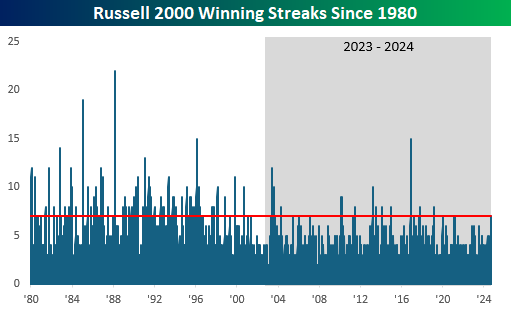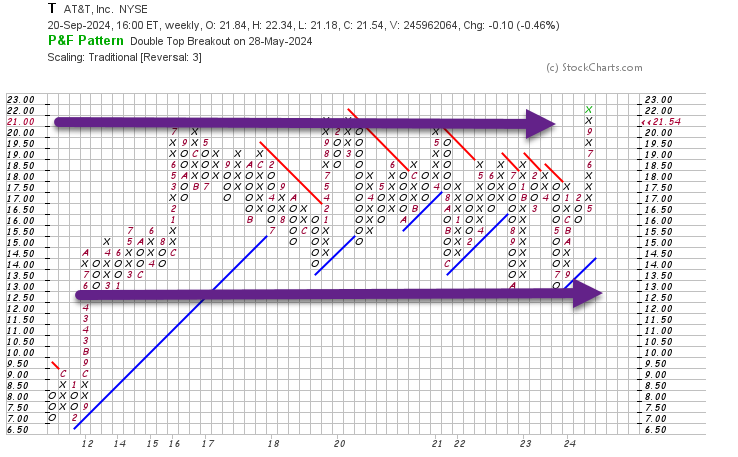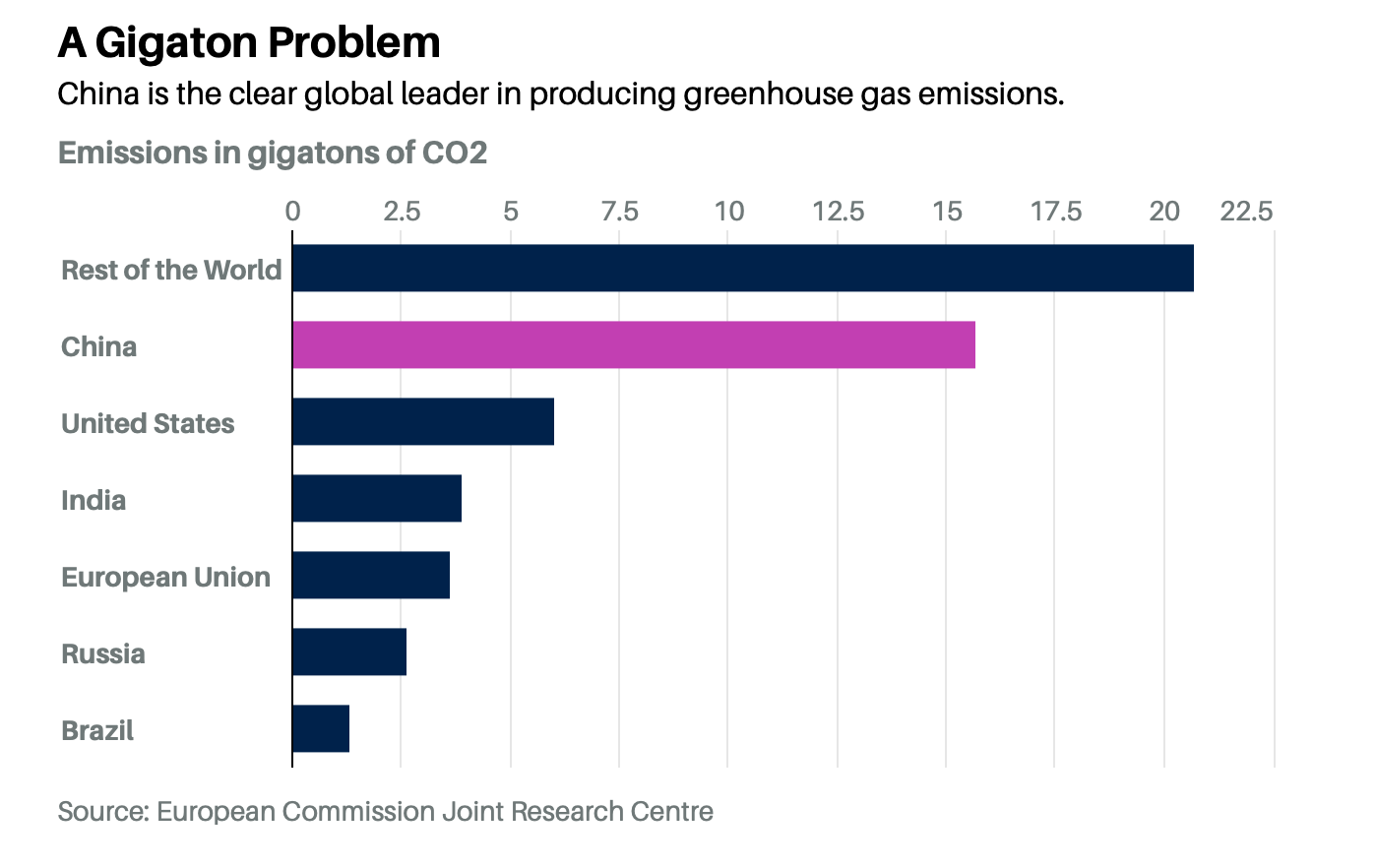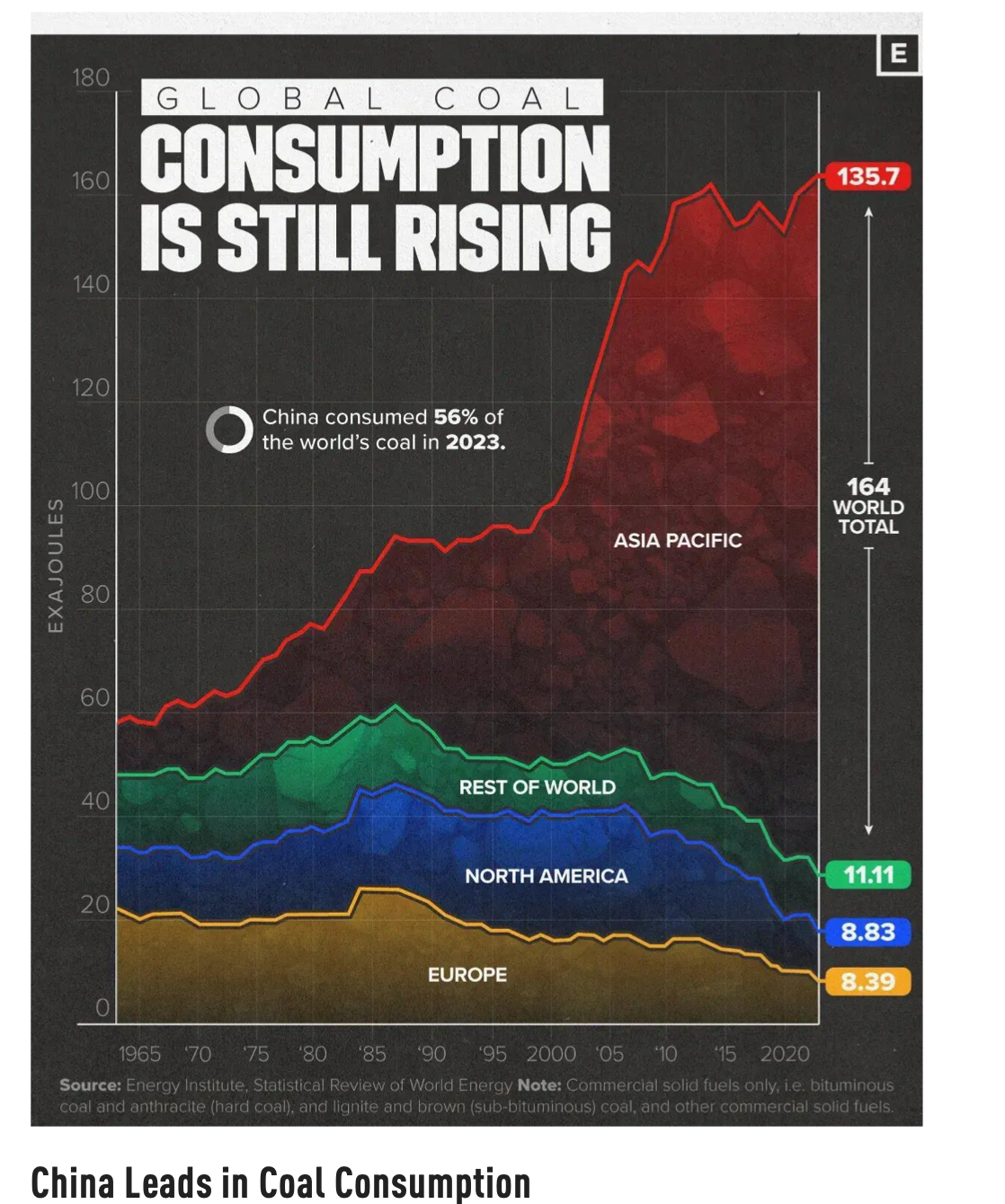1. Since 2015 S&P Big Outperformance….How About 30 Years?
Over 30 Years Equal Weight (RSP), IJH Mid-Cap, and IJR Small Cap All Beat S&P
Nasdaq Dorsey Wright–The “core” of domestic equities, represented by the S&P 500, has dominated the market over the last decade.
Since 2015, the SPDR S&P 500 ETF (SPY) is up 178%, handily besting the Invesco S&P 500 Equal Weight ETF (RSP), iShares S&P Mid Cap 400 Index Fund (IJH), and iShares S&P Small Cap 600 Index Fund (IJR) by 50% in cumulative return. However, the core of the market hasn’t always been the area of strength within US Equities. In fact, the cap weighted S&P 500 has underperformed all three of the other previously mentioned indices across the last 30 years (since the start of 95′). While that alone is interesting, you may be surprised by which group sits atop the list: the S&P Mid Cap 400 Index (IJH).

2. 10% Plus Per Year Sales Growth is Rare
From Zach Goldberg at Jefferies
–GS noted, it’s hard to grow revenues fast for long. There are many examples of companies that can grow sales by more than 10% in a year, even 2 years, but very few examples of companies that can grow sales more than 10% year-after-year. Persistently high growth is rare and special — and unusual; the odds are against it happening

3. S&P Best Performance 2024 is not NVDA….VST +180%

4. Crypto High Correlation to Stocks Right Now
From The Daily Chartbook
Crypto vs. stocks. “A 40-day correlation coefficient for a gauge of the largest 100 digital assets and the S&P 500 Index is at about 0.67, a level exceeded only in the second quarter of 2022 when it topped 0.72.”

5. China Double Bottom?

6. Rare Air-S&P Positive 35 of Past 52 Weeks
Sherwood News
But over the past year, the S&P 500’s rise has been unusually consistent. In 35 of the past 52 weeks, the benchmark US index has gained. This is rarefied air: going back to March 1957, only 5% of the time has the S&P 500 posted more weekly wins over a one-year span.

https://sherwood.news/markets/stock-market-weekly-relentless-rise
7. Post Rate Cut Returns Near All-Time S&P Highs

8. Teen Girls’ Brains Aged Rapidly During Pandemic, Study Finds
NYT- By Ellen Barry
Neuroimaging found girls experienced cortical thinning far faster than boys did during the first year of Covid lockdowns

The thinning of the cortex is seen by scientists as the brain rewiring itself as it matures.Credit…Institute for Learning and Brain Sciences, University of Washington
A study of adolescent brain development that tested children before and after coronavirus pandemic lockdowns in the United States found that girls’ brains aged far faster than expected, something the researchers attributed to social isolation.
The study from the University of Washington, published on Monday in the Proceedings of the National Academy of Sciences, measured cortical thinning, a process that starts in either late childhood or early adolescence, as the brain begins to prune redundant synapses and shrink its outer layer.
Thinning of the cortex is not necessarily bad; some scientists frame the process as the brain rewiring itself as it matures, increasing its efficiency. But the process is known to accelerate in stressful conditions, and accelerated thinning is correlated with depression and anxiety.
Scans taken in 2021, after shutdowns started to lift, showed that both boys and girls had experienced rapid cortical thinning during that period. But the effect was far more notable in girls, whose thinning had accelerated, on average, by 4.2 years ahead of what was expected; the thinning in boys’ brains had accelerated 1.4 years ahead of what was expected.
https://www.nytimes.com/2024/09/09/health/teen-brains-pandemic-girls.html
9. The Tax Code Grew in Length by 40% 1994-2021
Barrons By Karen Hube
The tax code grew in length by 40% to about four million words between 1994 and 2021 and has expanded steadily since, and that pales when compared with ballooning regulations published annually to interpret the changes, along with tax court case law that sets precedents for how the tax code applies in specific circumstances. From 2000 to 2022, the Department of Treasury’s annual volume of regulations grew 35% to 17,631 pages from 13,070, according to the National Taxpayers Union Foundation.
https://www.barrons.com/articles/filing-taxes-harris-trump-11f8de34?mod=past_editions
10. Put Yourself in Position for Success -Farnam Street Blog
“So much of life isn’t about intelligence or luck but putting yourself in a position for success.
The cash-rich investor thrives in crashes. The well-rested athlete outperforms the exhausted star. The student who studies daily aces the pop quiz. The employee who leaves early gets to the meeting with the CEO on time while the other person sits in the unanticipated traffic. All seem lucky, but they’ve positioned themselves to succeed.






































 Source:
Source: